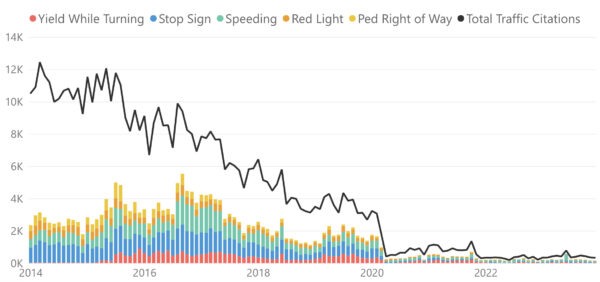Anti-VEGF Treatment for Macular Edema and CRVO
I have been getting treatments in one my right eye for macular edema related to a CRVO (central retinal vein occlusion) off and on since 2017. I am very happy with the treatments, without them I would have gone blind in that eye within a few months! The treatment has only existed for about 20 years, if I had been born earlier, I would be partially blind now!
The treatment is to get Anti-VEGF medicine, Avastin (bevacizumab) injected by needle in my eye every 8 weeks. In some people, the leak cures itself after a while, in others it doesn’t. When I first was treated in 2017, the treatments were every 3 weeks, tapered to every 8 weeks and then stopped! But 2 years later, the issue reoccured and I’ve been on 8 week call-back for something like 2 years now.
Summary of below: one doctor’s treatment routinely knocked me out for a whole day while the other treatment doesn’t, but both save my vision!
I’ve gotten treatments from 3 different doctors at two different practices. The treatments I received from all three doctors (Dr. Jumper and Dr. Johnson of West Coast Retina, and Dr. Vora of Oakland Kaiser Permanente) all had similar, excellent outcomes. The crosshatching and poor vision in the middle of my vision in my right eye would decrease and the acuity would improve over the course of about 2 days, with noticeable improvement in about 3 hours or so. All treatments have been effective for about 6-9 weeks.
The short term outcome of my treatments was dramatically different between my West Coast Retina treatments and my Dr. Vora treatments. There are two important areas of difference: the time to clear the bubble in my eye and my extreme fatigue after an appointment.
After a West Coast treatment, the bubble of medication floating in my eye would take about 2 hours to clear well enough for me to see clearly. Since I usually travel to an appointment on my own, this means I sit in my car for 2 hours after an appointment, waiting for my vision to clear.
More importantly, after most treatments at West Coast Retina, I would have moderate to extreme fatigue. After about half of my West Coast appointments, I needed to go home and sleep for 4 hours, even if the appointment was in the morning. Being generally in very good health, I found this disturbing; I don’t ever need to sleep in the middle of the day. I would say the level of pain would register as a 3-5 on a 10 point scale, which “shouldn’t” cause such a reaction, but it did! I came to count on being “done for the day” after a West Coast Retina appointment. I am reminded that a few years ago, my wife had synechia in both irises, which caused all manner of odd symptoms including headaches, fatigue, increased need for sleep, and irritability but did not cause eye pain per se.
I react to Dr. Vora’s treatments differently. Dr. Vora’s treatment generally feels like getting punched in the eyeball, about 3 seconds of pain at a level of 8 out of 10 and then it’s done. West Coast treatments are more like… I don’t know, getting a needle stuck in my eye, which is a bit slower of a process. Neither experience is better or worse as I am ECSTATIC that I get to keep my vision. But I can tell the procedural and pre-procedural techniques are different. With Dr. Vora, within 10-15 minutes, I’ve recovered emotionally and physically, and the bubble of medicine in my eye has dissipated so that I can safely drive. The pain is at a “2” and falls to 0 within an hour. After every treatment, I’ve been able to go about my day right afterward, which is definitely a better short-term outcome!
There’s no telling if it’s related but the treatments I received in 2017-2019 from West Coast Retina caused a remission of the symptoms, but my more recent treatment from Dr. Vora hasn’t caused a remission, I’ve been getting treatments every 8 weeks for a while now.
I don’t know exactly why these treatments have different short-term outcomes. I’ve asked the doctors and they didn’t have any comment. I’m sure that each is performing techniques they believe are best for their patients.








